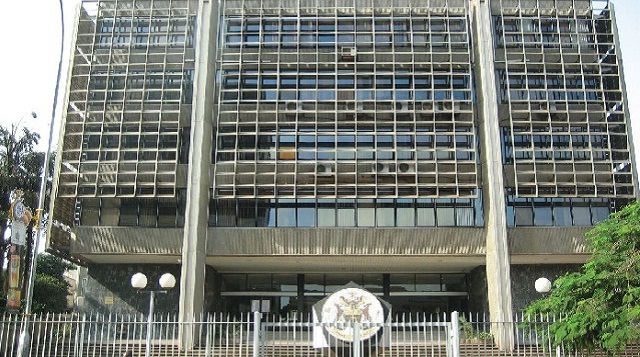
Governor projects 6.5% economic growth in three years but private sector concerns remain
Kampala, Uganda | JULIUS BUSINGE | On April 09, the Bank of Uganda Governor, Emmanuel Tumusiime-Mutebile, arrivedat the Bank’s conference room on the 7th Floor to announce the Monetary Policy Statement for Aprilpast the usual time, 12:00pm.
The Governor, who usually keeps time, came 40 minutes late. Looking calm and in protection of Deputy Governor, Louis Kasekende and newly appointed Director of Communications, Charity Mugumya alongside other senior staff, Mutebile read the statement without responding to any questions from journalists.
Instead, he requestedthe Bank’s Executive Director for Research, Adam Mugume, to respond. However, Mutebile, in his statement, said for the next three years, the economy will be growing in the region of 6.5%, higher than the average 4.5% recorded in the past six years.
Mutebile said the growth will be supported by the positive growth trend of the agriculture sector, Foreign Direct Investments and planned investments in oil and gas.
The country’s agriculture sector, according to Mugume (the ED for Research), grew from -0.4% in 2016 to 6.1% last year while Foreign Direct Investments (FDI)grew by 28% in the twelve months up to February 2018.
In money terms, Mugume told The Independentthe country recorded US$742million up from around $541 million in 12 months to February 2018 as FDI. In the previous year, the country had recorded less than US$500million.
The other supporting factor, Mugume said, will be growth in exports that would stabilise the local currency and support business activities.
He said exports, in the 12 months to February 2018, increased to about US$3.4bn up from US$2.5bn in the same period of 2016/17. However, opportunities from the exports maybehindered by expanding the import bill which grew to around US$5 billion in the period up to Feb.2018 compared to US$ 4.7billion in the same period up to Feb.2017.
This coupled with the planned investment in oil and gas sector and projected growth in banking and insurance, Mugume said would support the projected growth rate.
“The only challenge is that we have not seen good growth in the industry sector which is posting [growth] in the region of 4-5%,” Mugume said. “But overall all indicatorsshow that growth will continue picking up.”
BoU’s optimism came one week after the Uganda Bureau of Statistics (UBOS) releasedits quarterly GDP estimates for the final quarter of 2017 indicating that a strong recovery of the economy had been underway since early 2017.
In the year ending February 2018, the Composite Index of Economic Activity (CIEA), which is the BoU’s high frequency indicator for real economic activity shows that in the year to Feb.2018, CIEA projects growth of about 6.4%. In addition, the quarterly GDP for 2017 indicates economic growth of 6.3% in 2017 compared to 3.0% in 2016.
“The economic growth outlook is more positive than was forecast at the Monetary Policy Committee (MPC) meeting of February 2018 and there are signs of increased business confidence,” Mutebile said, before announcing that he was maintaining the Central Bank Rate – a key signal rate for interest rate movements – at 9% starting April to June, aheadof the FY2018/19 budget reading.
He said the current MPC decision was based on an assessment of the current and evolving macroeconomic situation and that it was consistent with supporting economic growth and achieving the inflation target.
Previous CBR cuts have seen commercial bank prime lending rates drop from an average of 28% [when the CBR was at 23%] at the end of 2011 to around 21% as at end of April 2018.
Mutebile, however said, there are downside risks to this outlook as indicators of aggregate demand including fiscal absorption and private sector credit (PSC) growth remain weak. Currently, PSC is growing at 5%, far lower than the 15-20% growth that was posted in the period 2012- 2015.
On inflation, Mutebile said the forecast remains 5% by end of 2019. However, he warned that the planned increase in indirect taxes, especially on fuel pump prices and financial services during FY2018/19 may contribute to the rise in inflation. The other risks to inflation, he said, are evolution of the exchange rate, food crop and international oil prices.
“Although the economic growth forecast has improved, demand pressures in the economy are not assessed to pose significant risks to the inflation outlook at the moment,” he said.
 The Independent Uganda: You get the Truth we Pay the Price
The Independent Uganda: You get the Truth we Pay the Price


